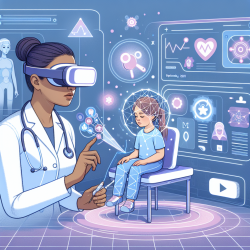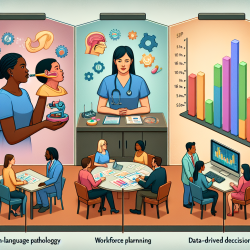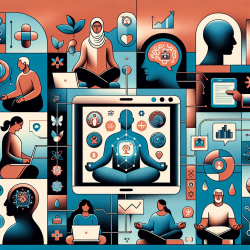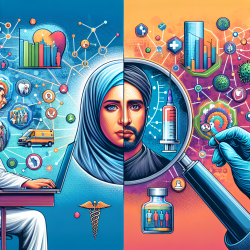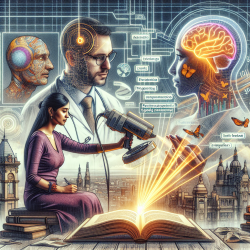Extended Reality (XR) and Artificial Intelligence (AI) are transforming the healthcare landscape, offering innovative solutions that enhance the quality of care and improve patient outcomes. As a practitioner in speech-language pathology, integrating these cutting-edge technologies into your practice can significantly elevate your therapeutic interventions, especially for children.
Recent research by Shaikh et al. (2022) in the paper "A data-centric artificial intelligent and extended reality technology in smart healthcare systems" highlights the potential of XR and AI in healthcare. The study delves into the various applications of XR, such as Virtual Reality (VR), Augmented Reality (AR), and Mixed Reality (MR), and their impact on different medical fields, including speech-language pathology.
Key Takeaways from the Research
- Enhanced Patient Engagement and Motivation: XR technologies can create immersive and interactive environments that captivate children's attention, making therapy sessions more engaging and enjoyable. For instance, VR can transport children to different virtual worlds where they can practice speech and language skills in a fun and stimulating context.
- Personalized Therapy Plans: AI algorithms can analyze large datasets to identify patterns and predict outcomes, allowing practitioners to tailor therapy plans to each child's unique needs. This data-driven approach ensures that interventions are targeted and effective, maximizing the chances of positive outcomes.
- Remote Therapy Sessions: The integration of XR and AI facilitates remote therapy sessions, breaking down geographical barriers and making it easier for children in underserved areas to access quality care. Teletherapy platforms equipped with XR capabilities can simulate in-person interactions, providing a seamless experience for both practitioners and patients.
- Improved Assessment and Progress Tracking: AI-powered tools can assist in the assessment of speech and language disorders by analyzing speech patterns and providing real-time feedback. This technology can also track a child's progress over time, offering valuable insights that can inform future therapy sessions.
Practical Implementation Tips
- Invest in XR Equipment: Equip your practice with VR headsets, AR glasses, and other XR devices. These tools can create immersive therapy environments that make sessions more engaging for children.
- Leverage AI for Data Analysis: Utilize AI software to analyze speech patterns and track progress. This data can help you tailor therapy plans to each child's specific needs, ensuring more effective interventions.
- Offer Remote Therapy Options: Implement teletherapy platforms that incorporate XR technologies. This will enable you to reach children in remote areas and provide high-quality care regardless of location.
- Stay Updated on Technological Advances: Continuously educate yourself on the latest developments in XR and AI technologies. Attending workshops, webinars, and conferences can help you stay ahead of the curve and integrate new tools into your practice effectively.
Encouragement for Further Research
While the potential of XR and AI in speech-language pathology is immense, the field is still in its infancy. I encourage practitioners to engage in further research and contribute to the growing body of knowledge. By sharing your experiences and findings, you can help shape the future of therapy and ensure that children receive the best possible care.
To read the original research paper, please follow this link: A data-centric artificial intelligent and extended reality technology in smart healthcare systems.
